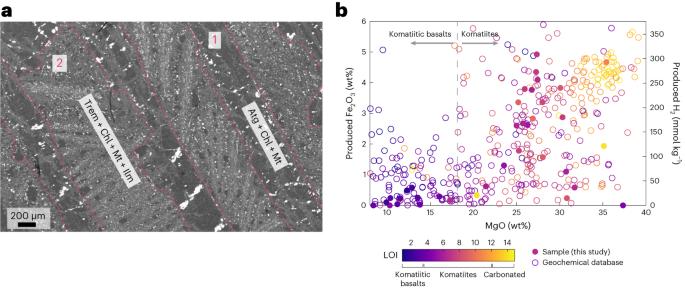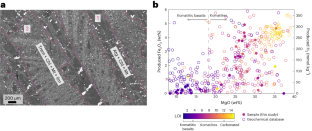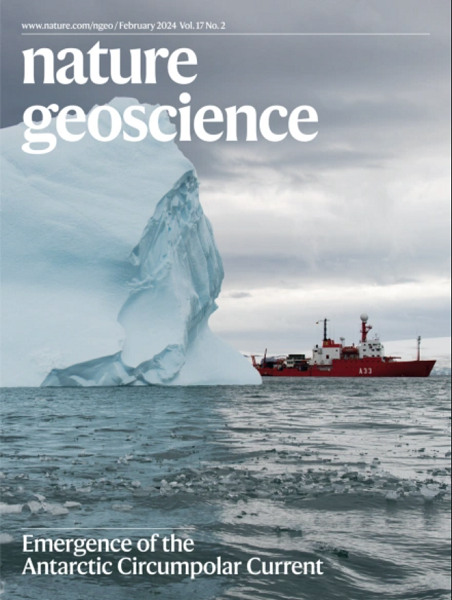古代地球H2生成的岩石记录
IF 15.7
1区 地球科学
Q1 GEOSCIENCES, MULTIDISCIPLINARY
引用次数: 0
摘要
H2是由岩石中的铁氧化形成的,可能是早期生命的关键能源。对35-27亿年前科马提岩的天然岩石样本进行分析,结合全球数据库的地球化学数据,量化了地球古代海洋中可能产生的H2量。本文章由计算机程序翻译,如有差异,请以英文原文为准。


A rock record of H2 production in the ancient Earth
H2, which is formed by the oxidation of iron in rocks, was likely a critical source of energy for early life. Analysis of natural rock samples from 3.5–2.7 billion-year-old komatiites, combined with geochemical data from a global database, quantifies the amount of H2 likely to have been produced in Earth’s ancient oceans.
求助全文
通过发布文献求助,成功后即可免费获取论文全文。
去求助
来源期刊

Nature Geoscience
地学-地球科学综合
CiteScore
26.70
自引率
1.60%
发文量
187
审稿时长
3.3 months
期刊介绍:
Nature Geoscience is a monthly interdisciplinary journal that gathers top-tier research spanning Earth Sciences and related fields.
The journal covers all geoscience disciplines, including fieldwork, modeling, and theoretical studies.
Topics include atmospheric science, biogeochemistry, climate science, geobiology, geochemistry, geoinformatics, remote sensing, geology, geomagnetism, paleomagnetism, geomorphology, geophysics, glaciology, hydrology, limnology, mineralogy, oceanography, paleontology, paleoclimatology, paleoceanography, petrology, planetary science, seismology, space physics, tectonics, and volcanology.
Nature Geoscience upholds its commitment to publishing significant, high-quality Earth Sciences research through fair, rapid, and rigorous peer review, overseen by a team of full-time professional editors.
 求助内容:
求助内容: 应助结果提醒方式:
应助结果提醒方式:


